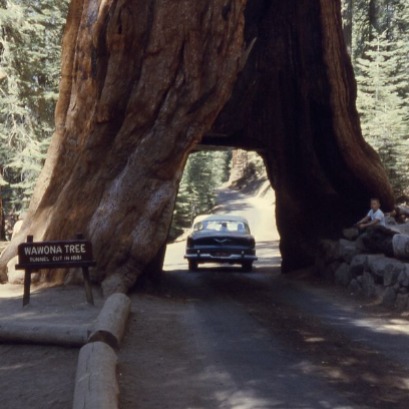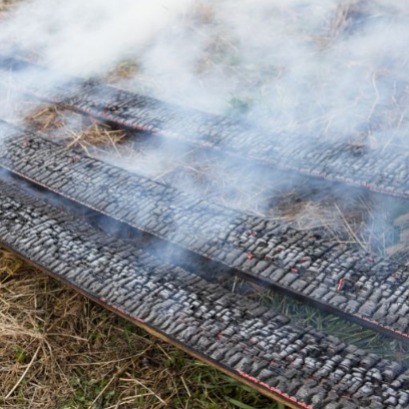
Wawona tree: the tourist attraction of the United States that disappeared in 1969
It was created in 1881 and became a very popular place during the following decades. However, when the tree fell at the close of the 1960s, everything changed. Wawona tree was the name that had a tourist attraction from the United States, which remained standing from 1881 to 1969 in Mariposa Grove, Yosemite National Park, California.
For decades, thousands of people approached the site with the intention of crossing the base of the famous tree. At first, the activity was on foot. Then, it was with cars. And finally, with cars, but everything changed 56 years ago, when the Wawona tree fell and the tunnel disappeared. How was the tunnel of the Wawona tree created? Through studies it was shown that the Wawona tree, which is described as a giant secuoya, was about 2,300 years at the time of its fall. That is why when the tunnel was created, in 1881, it was already a very old specimen. In that decade of the nineteenth century, a fire advanced on the tree. And, although it could be fought, much of its base was weakened. That is why it was planned to eliminate the affected sector, to build a tunnel and raise the tourist potential of the place. So, the Wawona tree gained popularity over time. But his great leap to fame happened after the foundation of the National Parks Service, in 1916, which coincided with the appearance of cars in California as a means of usual transport. Nearby. Why did the Wawona tree fall? 144 years ago, when the Wawona tree tunnel was created, this specimen has already experienced a slight inclination. And, although he kept standing in these conditions for almost a century, he fell during a day in February 1969. Among the reasons for his fall, in addition to the aforementioned factor, the existence of a large amount of snow was also added in his glass, product of an intense snow In the place currently? After the collapse of 1969, the United States authorities decided to leave the remains in the same place where they fell. It happens that these giant trees, over time, become homes for insects and small animals, as well as the basis for new plants. And, although it was thought that the site would not receive more visits, the opposite happened. Today, many tourists approach the huge base of the tree to take photos. That is why, currently, it is known as a fallen tunnel tree.
IT MAY INTEREST YOU
 The new edition has come out!
The new edition has come out!
Inspiration, innovation and the latest in the world of wood and furniture await you.
 Burned wood: the Japanese technique that beautifies and protects the material
Burned wood: the Japanese technique that beautifies and protects the material
Elegant, ecological and resistant: the wood treated with the millenary technique called Yakisugi challenges the weather and the passage of time. In the world of design and construction, a Japanese ancestral technique is gaining prominence. This is the Yakisugi (also known as Shou Sugi Ban), a method that consists in burning the surface of the wood to make it more resistant and attractive. Although it may seem contradictory, exposing wood to fire gives natural protection against moisture, insects and deterioration over time.
 Mouliá participated in the presentation of the 10th Wood Expo at the ADS25 event
Mouliá participated in the presentation of the 10th Wood Expo at the ADS25 event
José Moulia, on behalf of the Government of Entre Ríos, participated in the Opening Panel of the ADS25 exhibition, developed on April 23 and 24 at the Higher School of Architecture and Design of the University of Morón. The meeting brought together professionals, academics and representatives of the construction sector committed to innovative and sustainable approaches.





















